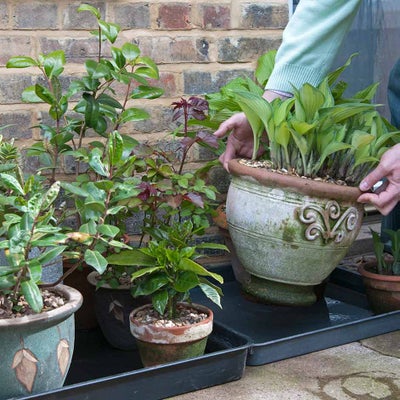
Quick facts
Plants grown in containers generally need more care and attention than those grown in the ground
Grouping containers close together near a house wall in winter will help protect roots from the cold
Saucers or trays placed under pots during dry spells in summer can help reduce water and fertiliser use
Plants for containers
Almost any type of plant can be grown in a container. Generally, the bigger the pot and the plant, the easier it is to care for. Soft, fleshy, leafy plants such as tomatoes and fuchsias are more demanding than ‘leathery’ plants such as pelargoniums (tender geraniums) or lavender.
For more on ideas of plants to grow in containers, see the links below;
Lilies: growing in containers
Roses: growing in containers
Trees: growing in containers
Fruit in containers
Herbs in containers
Vegetables in containers
General maintenance
Watering
Watering is one of the most important jobs when growing plants in containers. Due to their restricted root area, container plants rely on us to provide the water they need, and to take steps to make sure they aren't getting too wet.
See the advice below on summer and winter care for information on watering plants in containers.
Feeding
Container plants quickly use up the in their , so most benefit from some feeding to keep them growing well. The frequency of feeding and type of fertiliser varies with the plant and the season - see the advice below on summer and winter care for more information.
Repotting
Plant roots eventually fill containers and this often reduces growth. Eventually, container plants need to be moved to a bigger pot or the compost refreshed in the same pot, as composts lose their structure over time. Shrubs and trees that stay in a pot for years are especially vulnerable unless repotted. For more information, see our step-by-step guide to repotting.
Summer care
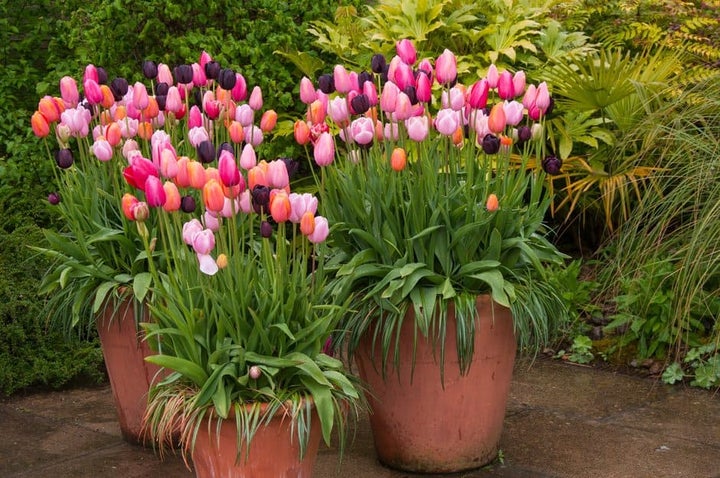
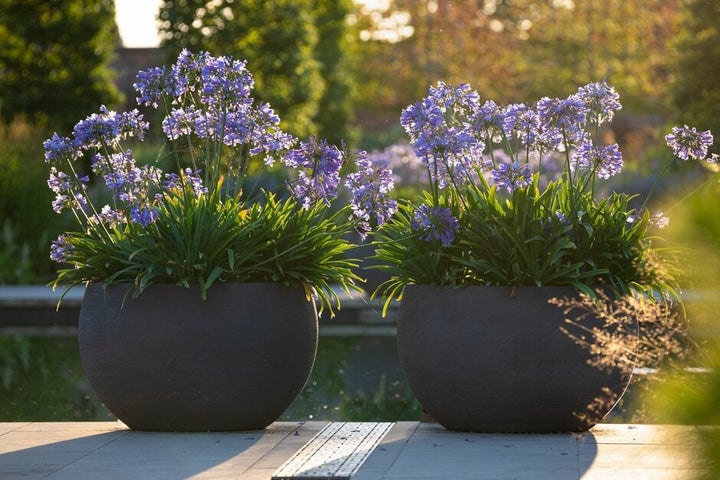
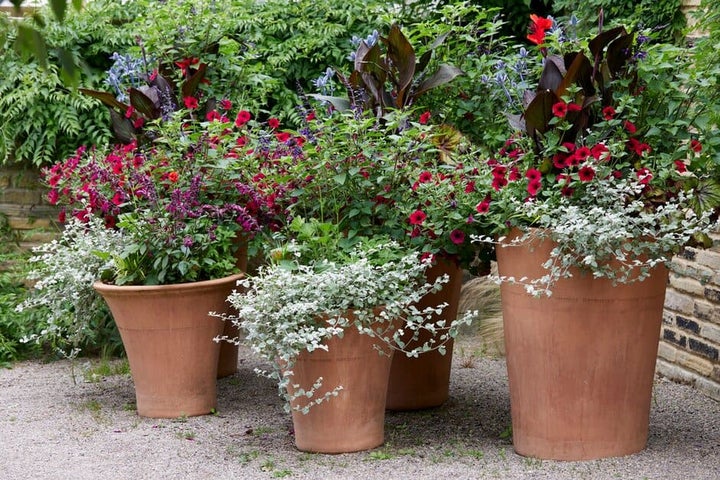
Plants in containers need attention all year, but summer is the most critical period as they can soon run short of water and nutrients.
Watering
- Check for moisture daily during warm or windy weather (twice daily in hot weather). If it has rained, it's still worth checking that the soil is moist below the surface
- Most plants will be fine if they are allowed to dry out a little between waterings and they will adapt to using less water if less is available to them
- Try to avoid letting plants reach the wilting stage; although they are likely to recover, their growth may be affected
- If water is not draining out freely, check the drainage holes for a blockage and assess structure – as the organic components decay, compost becomes soggy, dense and lacking in air spaces
- Grouping pots, to provide mutual shade and raise local air , helps reduce their watering needs
- pots reduces water lost from the soil by evaporation, but as most is lost through plant leaves careful watering will still be needed
See our handy guide for more step-by-step advice on how to water containers.
Feeding
- Check the instructions on your compost bag to see how long any added fertilisers will last
- Fast-growing , edibles and hungry plants (like roses) benefit from regular feeding from April to the end of August with a general-purpose proprietary liquid feed
- For long-term plantings, like shrubs in pots, add a controlled-release fertiliser when planting, topdressing or repotting
- With soil-less composts, make sure your fertiliser includes essential trace elements
- After late summer, feeding is usually suspended until mid-spring; however bedding plants and other short-lived will still benefit from feeding until early autumn
- Feed when the compost is moist
Winter care
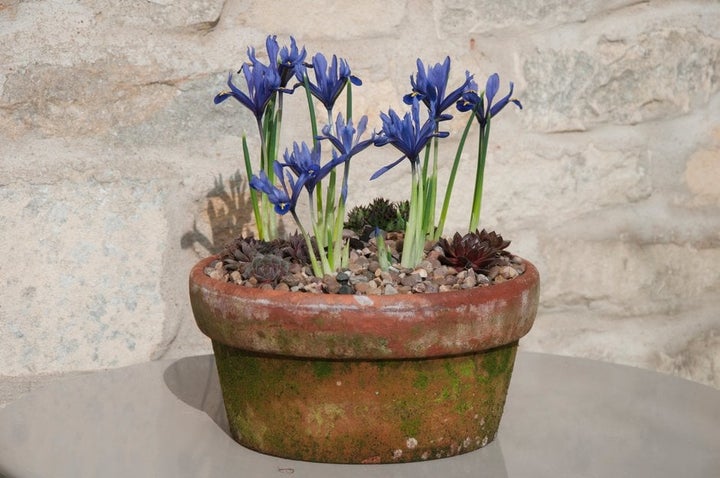
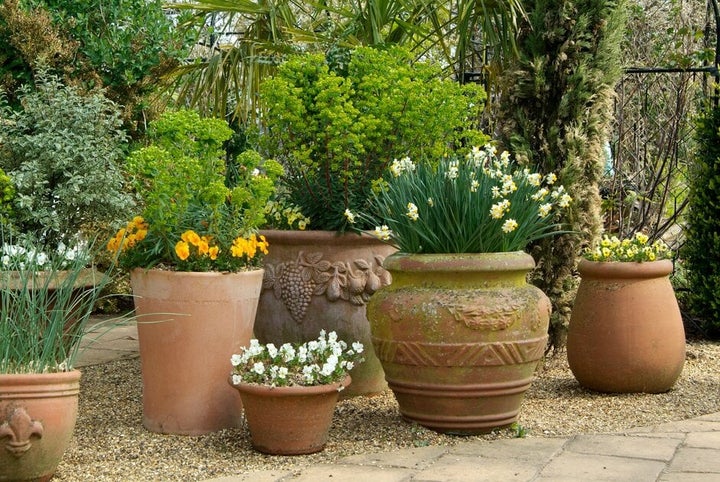
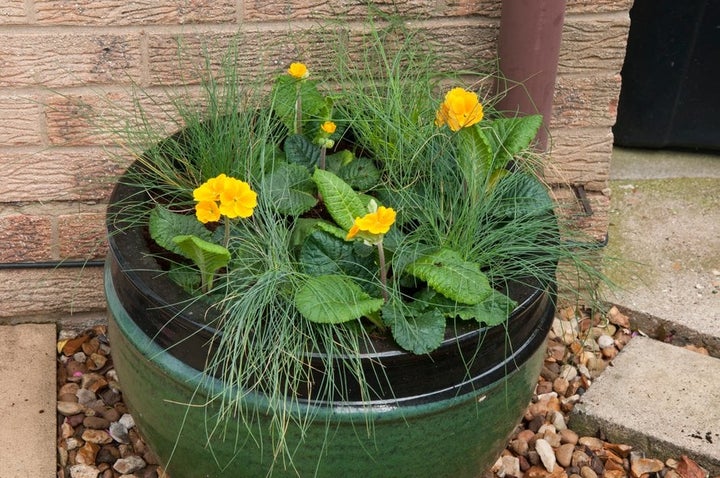
In winter, the main danger is freezing, which may kill plants.
Frost protection
- Protect pots with or bring them under temporary cover
- In very wet periods move plants under temporary cover if the compost becomes sodden, until it has dried out a little. The ‘rain shadow’ of walls can be sufficient
- Remove saucers in winter
Watering
- Watering may still be necessary for conifers and other evergreens, especially if you have moved them under cover where they receive no rain. Check evergreens and conifers at least weekly and water if needed
- Watering is seldom necessary for or other plants
- Avoid watering if frost is forecast
Feeding
- Feeding is not necessary during the winter months
Problems
Overwatering is the most common cause of loss of container plants; watering should aim to keep the moist, never soggy and avoid alternating dryness and saturation.
Plants grown in containers suffer from many of the same ailments as those grown in beds and borders, such as aphids, algae, liverworts and moss, scale insects and vine weevils.
Overpotting is another common cause of problems.











